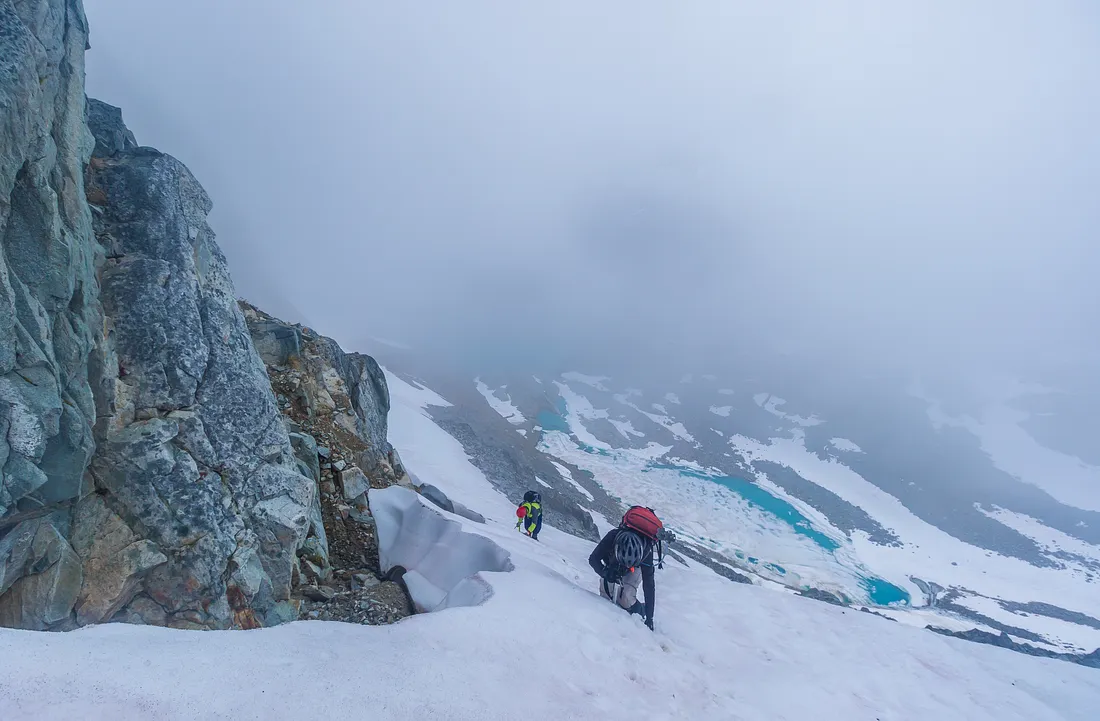Quick heads-up: some of the links on this page are affiliate links. If you make a purchase through them, we may earn a small commission (at no extra cost to you). This small bit of income helps keep our site running.
What Size Ice Axe Do You Need

When you're sliding down the side of a mountain is not the right time to figure out that you bought the wrong ice axe. Ice axes come in a surprisingly wide array of lengths, so it's understandable that it can be a little confusing where to start. This guide should get you started on figuring out what size ice axe you need, and started on your next snowy adventure.
Why Size Matters
Getting a well sized ice axe size is key for both safety and efficiency. If it's too short, you'll find yourself hunched over on inclines, which isn't comfortable or safe. Go too long, and it becomes cumbersome, affecting your mobility and maybe even tripping you up. So, how do you strike the perfect balance?
Measuring Up
The old-school way of sizing an ice axe involves holding it next to. Ideally, the tip should reach your ankle. This method gives you a baseline, but it's just a starting point. The right size also heavily depends on what kinds of adventures you intend on having with the ice axe. For technical ascents, a shorter axe gives you better control, while for glacier traversing, a longer axe might be better.
Understanding Use Cases
Broadly, there are 2 main things that adventurers use ice axes for: general mountaineering and technical climbing.
General Mountaineering Ice Axes
For general mountaineering, you want an axe that offers a good balance between length and weight, giving you the necessary stability, without being big, heavy and cumbersome. These axes are designed for basic snow and glacier travel, self-arresting if you're unlucky enough to start sliding, and occasionally, a steep snow climb. A general mountaineering axe like the Black Diamond Raven Pro Ice Axe is an excellent example. It's lightweight, durable, and designed for a broad range of activities. It'll do anything from crossing snowfields to securing yourself on moderately steep snow.
Technical Ice Climbing Ice Axes
At the other end of the spectrum, technical ice climbing axes are shorter, more curved, and often come in pairs (one for each hand). They're designed for vertical ice and mixed climbing, where precision and the ability to anchor into ice efficiently are really important for not falling. Axes in this category, like the Petzl Quark Ice Axe, are engineered for performance on steep terrains. They come with aggressive picks and grips that make it easier to handle during technical ice climbing maneuvers.
Hybrid Axes
There are also hybrid models, like the Petzl Summit Evo Ice Axe, which does a decent job of bridging the gap between general mountaineering and technical mountaineering. These kinds of ice axes are versatile, with features that will be useful across a wide range of mountain scenarios, such as a slightly curved shaft for steeper climbs and a comfortable grip for long treks. They'll do a decent job everywhere, but because they're not specialized they don't excel at anything either.

My Recommendations
Based on my experiences, for general mountaineering, an axe length of 60-70 cm works well for average heights, and if you're taller something in the 70-75 cm range will probably suit you better. Trying the ice axe out in person is usually a good idea, and you can use the rule about ankle length that we outlined above. But if you can't go in person, you can always just something long in your hand, and measure how far it is from there to your ankle.
And for technical climbing, a shorter axe, something like 50 to 60 cm, offers better control and maneuverability.
Adjusting for Terrain
The terrain you expect to get out on should also be factored in when deciding the size and type of ice axe you need. For any kind of vertical or near vertical climbing, you really want a shorter, technical ice axe with the right grip. For less demanding terrains where the axe serves more as a walking aid, a longer axe is better. If you foresee yourself getting in to some steeper snow, but not actually doing any climbing, then consider getting something that's 10cm or so shorter than your ankle length.
